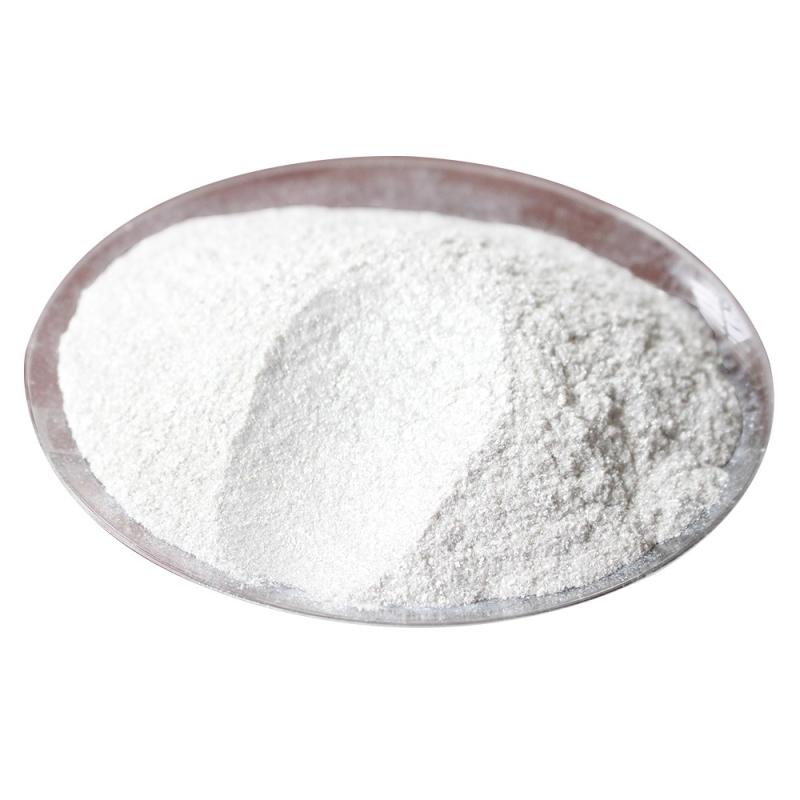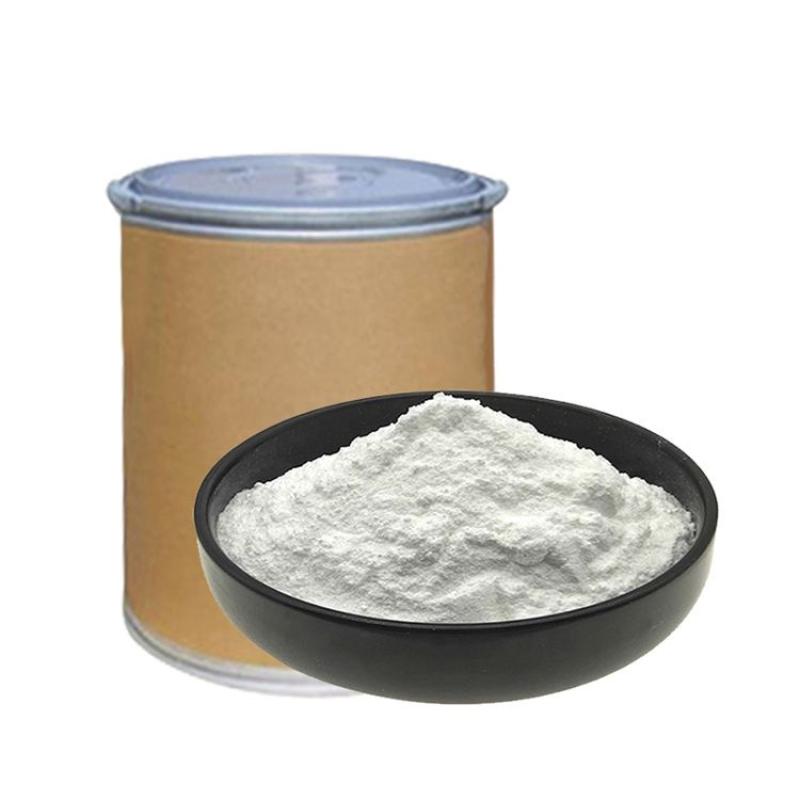Common name: ametrynChemical name:N-ethyl-N’-(1-methylethyl)-6-(methylthio)-1,3,5-triazine-2,4-diamineMolecular formula: C9H17N5SStructural formula:Molecular weight: 227.33CAS No. : 834-12-8Physical and chemical properties:White crystalline solid. m.p. 80~84℃ (recrystallized in petroleum ether), density 1.19g/m3, vapor pressure 1.12×10-4Pa. The solubility is: acetone 500g/ChemicalbookL, methanol 450g/L, toluene 400g/L, water 18.5mg/L. It is stable in slightly acidic or slightly alkaline medium, and easily hydrolyzed in strong acid or strong alkaline medium.
Contact Now
Common name: EpoxiconazoleChemical name:1-[[3-(2-chlorophenyl)-2-(4-fluorophenyl)oxiran-2-yl]methyl]-1,2,4-triazole Molecular formula: C17H13ClFN3OStructural formula: Molecular weight: 329.76CAS No. : 135319-73-2Product description: Epoxiconazole is a fungicide active ingredient from the class of azoles developed to protect crops. In particular, the substance inhibits the metabolism of fungi cells infesting useful plants, and thereby prevents the growth of the mycelia (fungal cells). Epoxiconazole also limits the production of conidia (mitospores).
Contact Now
Product description:Lufenuron is the active factor inside the veterinary flea manage remedy application, and one of the energetic elements in the flea, heartworm, ringworm and anthelmintic medicine milbemycin oxime/lufenuron (sentinel).Lufenuron is stored within the animal's body fats and transferred to adult fleas via the host's blood when they feed. adult fleas switch it to their growing eggs via their blood, and to hatched larvae feeding on their excrement.
Contact Now
Chlorfenapyr is converted into active substances (insecticidal interest) by multifunctional oxidases in bugs. note: multifunctional oxidase mainly performs an critical role inside the interpretation of pyrethroids, organophosphorus and macrolides.Common name: CHLORFENAPYRChemical name: 4-bromo-2-(4-chlorophenyl)-1-ethoxymethyl-5-trifluoromethylpyrrole-3-carbonitrile Molecular formula: C15H11BrClF3N2OStructural formula:Molecular weight: 407.61CAS No. : 122453-73-0Physical and chemical properties:Pure white solid. M.p.
Contact Now
Common name: AzoxystrobinChemical name: Methyl(2E)-2-(2-{[6-(2-cyanophenoxy)pyrimidin-4-yl]oxy}phenyl)-3-methoxyprop-2-enoateMolecular formula: C22H17N3O5Structural formula: Molecular weight: 403.39CAS No. : 131860-33-8Physical and chemical properties:Appearance White crystalline solidUsage:Azoxystrobin is a xylem-mobile systemic fungicide with translaminar, protectant and curative properties. In cereal crops, its main outlet, the length of disease control is generally about four to six weeks during the period of active stem elongation.
Contact Now
Structural formula:Molecular weight: 419.9CAS No. : 51630-58-1Product description:Fenvalerate is a synthetic pyrethroid insecticide. It is a mixture of four optical isomers which have different insecticidal activities. The 2-S alpha (or SS) configuration, known as esfenvalerate, is the most insecticidally active isomer. Fenvalerate consists of about 23% of this isomer.Fenvalerate is an insecticide of moderate mammalian toxicity. In laboratory animals, central nervous system toxicity is observed following acute or short-term exposure.
Contact Now
Product description:Epoxiconazole is a fungicide active element from the magnificence of azoles evolved to defend vegetation. especially, the substance inhibits the metabolism of fungi cells infesting beneficial plants, and thereby prevents the growth of the mycelia (fungal cells). epoxiconazole also limits the producing of conidia (mitospores). epoxiconazole become introduced to the marketplace thru basf se in 1993 and can be located in many products and product mixtures concentrated on a large wide form of pathogens in various plant life.
Contact Now
Common name: PymetrozineChemical name: (E)-4,5-Fihydro-6-methyl-4-((3-pyridinylmethylene)amino)-1,2,4-triazin-3(2H)-oneMolecular formula: C10H11N5OStructural formula:Molecular weight: 217.23CAS No. : 123312-89-0Product description:Pymetrozine belongs to the pyridine (pyridinethimide) or triazinone class of insecticides and is a non - cytocytic insecticide. Pymetrozine has a tactile effect on insect pests and internal absorption activity. In plants, it can transport in both xylem and phloem. Therefore, it can be used as foliar spray and soil treatment.
Contact Now
Common name: AcetochlorChemical name: 2-chloro-N-(ethoxymethyl)-N-(2-ethyl-6-methylphenyl)acetamideMolecular formula: C14H20ClNO2Structural formula:Molecular weight: 269.77CAS No. : 34256-82-1Physical and chemical properties:Light brown liquid. b.p.>200℃, m.p.>0℃, vapor pressure 133.3Pa, relative density 1.11 (30℃).
Contact Now
Product description:Pendimethalin is an herbicide of the dinitroaniline magnificence used in premergence and postemergence programs to manipulate annual grasses and sure broadleaf weeds. it inhibits mobile department and cellular elongation.
Contact Now
Usage:Chlorpyrifos is used in approximately one hundred nations round the world to manipulate insects in agricultural, residential, and business settings. its use in residential packages is limited in more than one international locations. in step with dow, chlorpyrifos is registered for use in nearly one hundred nations and is yearly carried out to approximately eight.five million crop acres. the crops with the maximum use consist of cotton, corn, almonds, and fruit trees, consisting of oranges, bananas, and apples.
Contact Now
Usage:Profenofos can be used on a spread of plants which includes cotton and veggies inclusive of maize, potato, soybean, and sugar beet. inside the usa it's far used exclusively on cotton and is more often than not used against lepidopteran bugs.Combined with phoxim, cypermethrin, beta-cypermethrin imidacloprid and deltamethrin, profenofos may be used in opposition to cotton mealybug, cabbage caterpillar, plutella xylostella and asparagus caterpillars, as well as in opposition to wheat and cabbage aphids.Structural formula:Molecular weight: 373.63CAS No.
Contact Now
Structural formula:Molecular weight: 422.9CAS No. : 82657-04-3Physical and chemical properties:Pure for gray solid. M.p. 68 ~ 70.6℃(industrial M.P. 61 ~ 66℃), relative density 1.210 (25℃), vapor pressure 2.4×10-5Pa, flash point 165℃Content,%≥ 95Product description:Bifenthrin is a pyrethroid insecticide. It is widely used against ant infestations, including the invasive red fire ant, by influencing its nervous system. It has a high toxicity to aquatic organisms.Bifenthrin is poorly soluble in water and often remains in soil.
Contact Now
Product description:Propolachlor, also referred to as saufort, is mainly used for directly sown rice fields. it has the traits of secure rice boom, extensive weed control spectrum and proper weed manage impact. it could essentially manipulate the damage of weeds in the whole boom length.
Contact Now
Chemical name of Indoxacarb products:methyl 7-chloro-2-[methoxycarbonyl-[4-(trifluoromethoxy)phenyl]carbamoyl]-3,5-dihydroindeno[1,2-e][1,3,4]oxadiazine-4a-carboxylate;Physical and chemical properties of Indoxacarb products:Molecular weight : 527.834Density: 1.53Melting point: 139-141 DHS CBoiling point: 571.4ºC at 760 mmHgFlash: DHS 299.3 CMolecular formula :C22H17ClF3N3O7Toxicity of Indoxacarb products(DAPX-MP062) acute transoral: LD50: male 1730mg/kg, female 268mg/kg: rabbit acute transcutaneous LD50: & GT; 5000 mg/kg.
Contact Now
usage:Amide selective, pre-emergence herbicide, can be applied to corn, cotton, soybean, peanut, rape, potato, sugarcane, sesame, sunflower and legume, cruciferous, nightshade, compositae, umbelliferae, etc. Control annual grass weeds in vegetable fields and orchards, and a single application keeps crops free from weed damage throughout the growing period. Not effective against perennial weeds.Common name: AcetochlorChemical name: 2-chloro-N-(ethoxymethyl)-N-(2-ethyl-6-methylphenyl)acetamideMolecular formula: C14H20ClNO2Structural formula:Molecular weight: 269.77CAS No.
Contact Now
Common name: GlufosinateChemical name: 2-Amino-4-[hydroxy(methylphosphonoyl)]butanoic acidMolecular formula: C5H18N3O4PStructural formula:Molecular weight: 215.19CAS No. : 77182-82-2Product description:Glufosinate-ammonium, also known as glufosinate, is a non-selective foliar spray of organophosphorus herbicide. It was first synthesized and developed by the Federal German Hoechst Chemical Company in 1979.
Contact Now
Thiamethoxam is a extensive-spectrum, systemic insecticide, which means that it's miles absorbed speedy with the resource of plant life and transported to all of its components, which includes pollen, in which it acts to discourage insect feeding.[citation needed] an insect can absorb it in its belly after feeding, or via direct contact, which includes thru its tracheal device.
Contact Now
Usage:It's far mainly used as an insecticide for controlling aphids, leafhoppers, thrips, planthoppers and other hemiptera, coleoptera, diptera and positive lepidoptera pests on rice, veggies, fruit bushes and different vegetation. it has excessive efficiency, large-spectrum, low dosage, low toxicity, lengthy-lasting efficacy, no harm to vegetation, secure use, no move-resistance to conventional insecticides, and many others. it has outstanding systemic and osmotic consequences and is a substitute for distinctly toxic natural some other variety of phosphorus insecticides.
Contact Now
Common name: Bispyribac-sodiumChemical name: 2,6-Bis((4,6-dimethoxy-2-pyrimidinyl)oxy)-benzoic acid sodium salt Molecular formula: C19H17N4NaO8Structural formula:Molecular weight: 452.35CAS No.
Contact Now
Structural formula:Deltamethrin is a pyrethroid composed of a single stereoisomer, of a possible 8 stereoisomers, selectively prepared by using the esterification of (1r,3r)- or cis-2,2-dimethyl-3-(2,2-dibromovinyl)cyclopropanecarboxylic acid with (alpha,s)- or (+)-alpha-cyano-three-phenoxybenzyl alcohol or by way of selective recrystallization of the racemic esters acquired by esterification of the (1r,3r)- or cis-acid with the racemic or (alpha-r, alpha-s, or alpha-r/s)- or + or − alcohol.Molecular weight: 505.2CAS No.
Contact Now
Common name: ThiramChemical name:tetramethylthioperoxydicarbonic diamide ([[(CH3)2N]C(S)]2S2); tm-95; Thiuram (Thiram)Molecular formula: C6H12N2S4Structural formula:Molecular weight: 240.43CAS No. : 137-26-8Physical and chemical properties:The pure product is colorless crystal and has no odor. m.p.155~156℃, relative density 1.29. Easily soluble in benzene, chloroform (230g/L), acetone (80g/L, carbon disulfide and other Chemicalbook organic solvents, slightly soluble in ether and ethanol (<10g/L), insoluble in water (30mg/L). Decomposes in acid.
Contact Now
Product Description:Butachlor is an amide-based, conductive, selective pre-emergence herbicide, also known as noralachlor, machete, and alachlor. This product is a light yellow oily liquid with a slight aromatic odor. It is not easily soluble in water and easily soluble in various organic solvents. It has chemical stability under normal temperature, neutral and weak alkaline conditions. Its decomposition is accelerated under strong acid conditions and can be degraded in soil. Low toxicity to humans and animals, irritating to skin and eyes, and high toxicity to fish.
Contact Now
Structural formula:Molecular weight: 249.67CAS No.
Contact Now


































